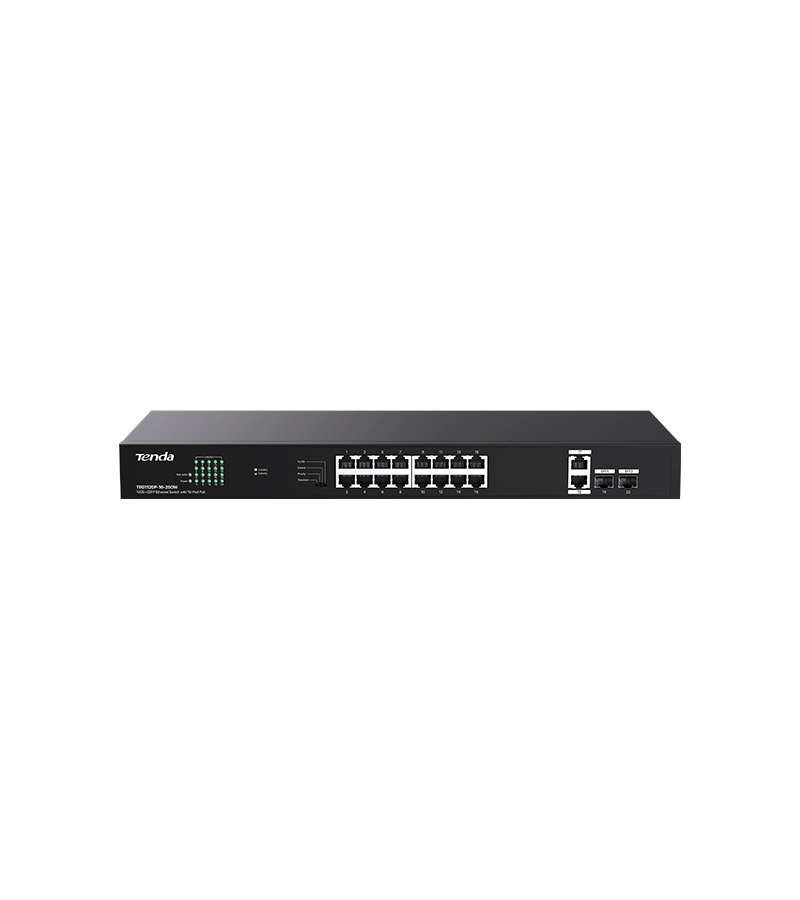
EN
| Network standards | IEEE 802.3 IEEE 802.3u IEEE 802.3ab IEEE 802.3x IEEE 802.3af IEEE 802.3at |
| LED Indicator | Power Link/Act PoE MAX |
| Interfaces | (18)1GE RJ45 ports (2)1GE SFP ports |
| Transmission media | Recommended: CAT5/5e UTP or better |
| Fan quantity | 1 |
| Dimension | 440mm*178mm*44mm |
| Level of protection | Port: 6 KV Power:6 KV |
| Forwarding mode | Store-and-forward |
| Switch capacity | 40Gbps |
| Packet forwarding rate | 29.8Mpps |
| Buffer | 4Mb |
| MAC address table | 8K |
| PoE budget | Single port: AF: 15.4W, AT: 30W Whole device: 230W |
| Power consumption | 250W |
| Input voltage | 100-240V AC,50 / 60Hz |
| Mounting | Rack mounting : support Desktop mounting: support Wall mounting: support |
| Environment | Operating Temperature: 0℃~45℃ Storage Temperature: -40℃~70℃ Operating Humidity: 10%~90% non-condensing Storage Humidity: 5%~90% non-condensing |
| Certification | FCC, CE, RoHS |
| Funtions | One-key to change network mode: 1.Standard: All ports can communicate with each other. It can be used as a common non-management PoE switch. 2.Priority: Ports 1 to 8 are high-priority ports, which greatly reduce packet loss and congestion when the network is congested. 3.Extend: The maximum transmission distance of the 9-16 ports of the switch can reach 250 meters, and all ports can communicate with each other. 4.VLAN: Ports 1 to 16 cannot communicate with each other, but can communicate with ports 17, 18, SFP1 (19), and SFP2 (20), which can be used to isolate broadcast storms and DHCP conflicts. |
